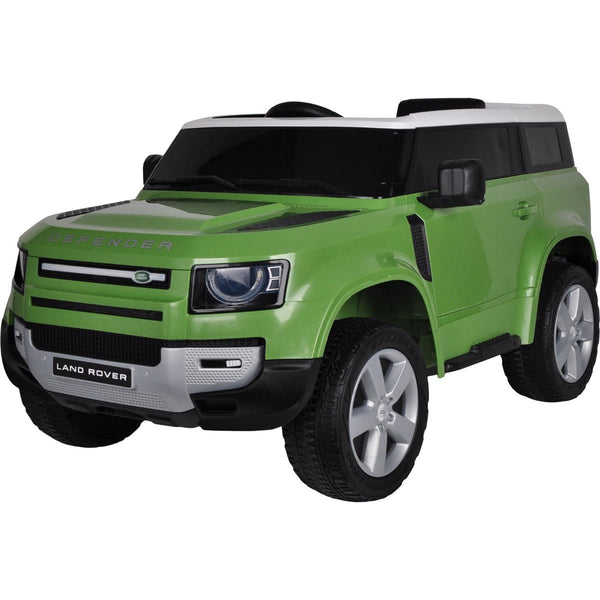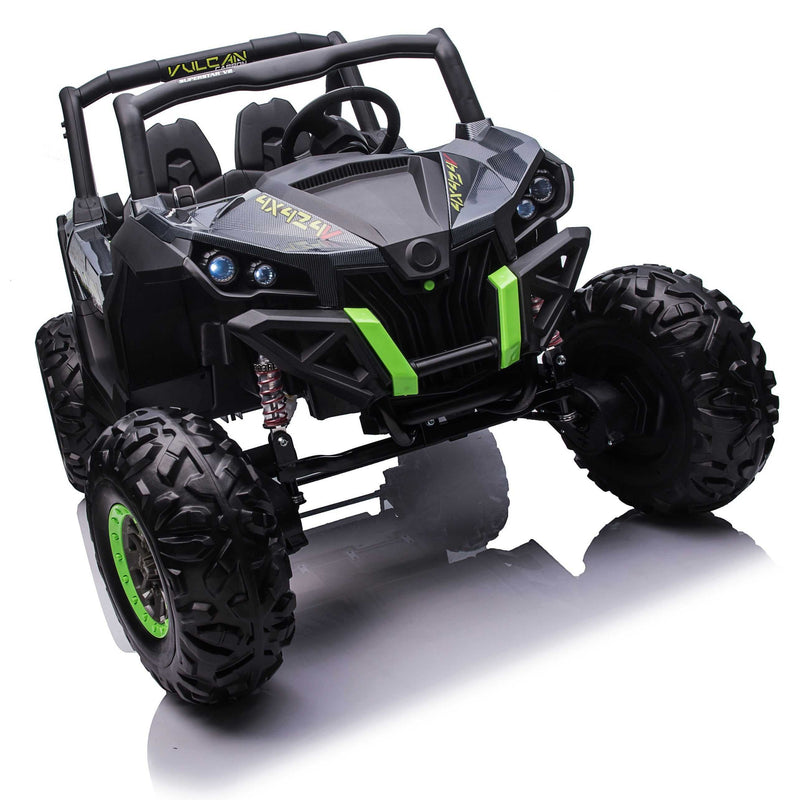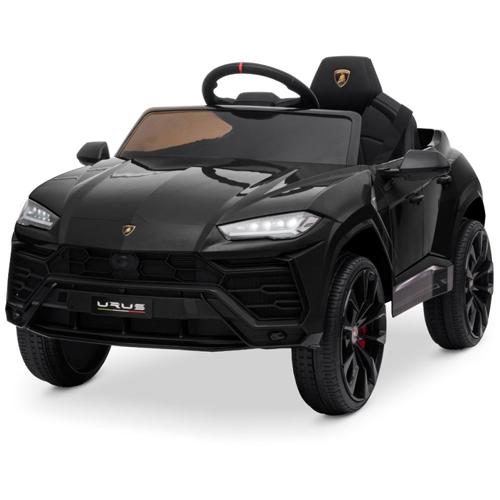It is important to understand the life span of your battery for your electronic ride-on vehicle for children and the time it takes to charge. This will guarantee that you get uninterrupted playtime. Here's what you should know about the battery type -
The majority of electronic ride-on cars for children utilize rechargeable batteries. They are usually lithium-ion or lead-acid batteries. Lithium-ion batteries typically have longer battery life and faster charging times than lead-acid batteries.
Battery Capacity
The battery's capacity can be measured in either watts-hours, or ampere-hours. High capacity batteries allow for longer playtime, without needing recharge.
Run Time -
The runtime of an electric car is how long the vehicle can run continuously on only one charge of battery. It is affected by factors like battery capacity, strength of motor, the terrain, or weight of a rider.
For electric cars typically, the run time is between 30 minutes and 2 hours with the use of a single battery. Some battery packs with higher capacity can provide longer run times.
Time to Charge -
The charging time is how long it takes the battery to fully recharge once it's depleted. Charging times vary according to battery capacity, charger specs and charging methods.
The charging times vary from 8 and 12 hours to complete charge for electric rides-on automobiles. Certain models can charge faster, especially those that use lithium-ion batteries.
It's crucial to follow the recommendations of the manufacturer for charging to ensure safety and longevity of the battery. The performance of the battery and its lifespan can be negatively affected when it is overcharged or undercharging it.
Charging Method
Most electric ride-on cars come with a charging cord that plugs directly into the outlet of your home. Certain models allow quick charging, or have an intelligent charger that controls the rate at which the battery is charged.
To prevent any damage to the electrical system or battery make sure that the charging connector and port are compatible with chargers supplied with your ride-on vehicle.
Additional Batteries
Certain electric rides on cars offer the option to purchase extra batteries, or spare batteries, for extended playtime. If you have additional batteries, you could easily swap out the ones that are depleted for fully-charged ones to reduce the time between repairs.
When you understand the battery's life and charging times of an electric ride-on children's car You can be sure that your children have enjoyment and uninterrupted playtime as they explore their surroundings. The battery's life can be extended by regularly charging the battery and employing proper charging methods. Take a look at the top remote control childrens cars for more info including electric ride along car, toy and car, 2 seater electric cars, toy in car, ride on car, toy cars, electric toy car, a toy car, ride ons, ride on car and more. .

What Is The Difference Between Indoor And Outdoor Models Of Children's Cars Made?
Outdoors or indoors, children car models are made to work in various circumstances and in different environments. Here are a few differences in these car designs - Indoor Use Cars
Dimension and weight Cars for indoor use are generally smaller and lighter to allow them to fit in small spaces like bedrooms, living spaces, and hallways. They are compact enough to be maneuverable around narrow passageways and corners without causing damage to furniture or walls.
Low Ground Coverage - Vehicles intended for indoor use feature a very low ground cover to keep them from getting stuck or caught against obstacles such as carpets and thresholds. This allows the car to glide smoothly and uninterrupted across indoor surfaces without risk of it getting stuck or falling over.
Smooth Wheels. The wheels that are used in cars for indoor use are constructed from substances like rubber, plastic, or laminate for the traction. The wheels are designed to cut down on noise and keep from scratching or scratching surfaces.
Limited Speed - For indoor usage, cars typically are slower than usual in order to make sure that they are controlled and operated safely in tight areas. This helps to avoid collisions and accidents with furniture, walls, or other objects that are found in indoor spaces.
Outdoor Use Cars -
Durable Construction: Vehicles made for outdoor use have strong materials like hard plastic or steel that can withstand rough handling, outdoor elements, such as moisture and sun. They are more resistant to wear and tear resulting from exposure to the elements.
High Ground Clearance Outdoor-use vehicles have higher ground clearance to handle bumps or uneven terrain that is encountered outside. This allows them to navigate rough terrains such as gravel, asphalt grass, dirt, or grass without becoming stuck or damaged.
Traction Tires - The tires on vehicles that are used outdoors are usually fitted with treads or patterns to improve grip and traction on rough or slippery surfaces. This ensures stability and control over surfaces outdoors, preventing sliding or skiing.
Weather Resistance - Outdoor use automobiles may have weather-resistant parts such as sealed electronics, waterproof casings, or rust-resistant materials that protect against environmental damages and moisture. They are able to endure exposure to rain, mud or puddles, without compromising the performance.
Higher Speeds - Cars designed for outdoor use typically feature higher top speeds in order to accommodate wide spaces and the long distances outdoors. It provides an exhilarating, adventurous experience for children who are exploring outdoor environments.
If you take into consideration these design features and traits, parents are able to pick a car for kids model that is tailored to their unique needs and environment, whether outdoor or indoors, and ensuring a safe, enjoyable, and long-lasting play experience for their child. See the top rated read this about kids ride on cars for blog advice including electric car ride, toy car, electric ride on, toy ride, electric ride on, a toy car, toy car toy car, car toy car toy, electric toy car, kiddies cars and more. .

How Do You Create The Budget For Buying A Ride-On Automobile For Your Child?
When deciding on a budget, you should be aware of factors such as the quality of the product, its durability, and your financial situation. Here's how to create a budget and get the best price for your money. Research Average Prices -
Begin by researching the average prices of ride-on kid's cars with the features you'd like. Online retailers, toy stores as well as manufacturer websites will give pricing information for various types of models.
Choose the most important features to have Find Must-Have Features
Choose features that will ensure your child's comfort and safety. Features like working headlights, realistic sounds as well as remote controls for the parents and seat belts could affect the price of the ride-on vehicle.
Prioritize features according to your child's interests and budgetary restrictions.
Think about durability and longevity
Find durable ride-ons composed of high-quality components like metals or plastics which are able to withstand frequent use and extreme outdoor conditions.
To get a better understanding of the durability and longevity it is recommended to read reviews or seek out the opinions of other parents. The initial cost of a reliable car will save you money in the long run by avoiding regular repair and replacements.
Compare prices among retailers
Comparing prices across retailers will help you find the best bargains. Find promotions and sales in local toy stores, department stores and online retailers.
Watch for discounts and clearance sales that will help you to save money without the quality.
Include any additional costs into your budget
Be sure to include any additional costs you might incur when buying a car ride-on for your child. This includes shipping costs tax, and other accessories (e.g. batteries for extra batteries, safety equipment).
Plan the costs of your vehicle, including the maintenance and accessories.
Budget realistically -
Set up a realistic budget that is based on your current financial situation and research. This will help align your priorities with your goals. Determine the most you're willing to pay for the car, while also considering durability, endurance and other the features.
Don't spend too much or use your budget to buy unnecessary features in your child's game.
Think about Long-Term Value
The child's ride-on vehicle is to be analyzed in relation to durability, versatility and its capacity to grow with the child. It might be worthwhile to invest into a larger model with more features in the long run.
If you set the budget, and then comparing prices, features as well as durability and long-term performance, you can find the most price for your money when purchasing an auto for your child to ride in your child. Make sure you select features that are crucial to your child’s safety and enjoyment, while taking into consideration your budget. Follow the best electric kids cars kidscars.co.uk news for more examples including two seater electric cars, toy car, car toy car toy, childrens digger, digger ride, ride of car, ride electric car, childrens digger, car on ride, ride on toy and more. .
